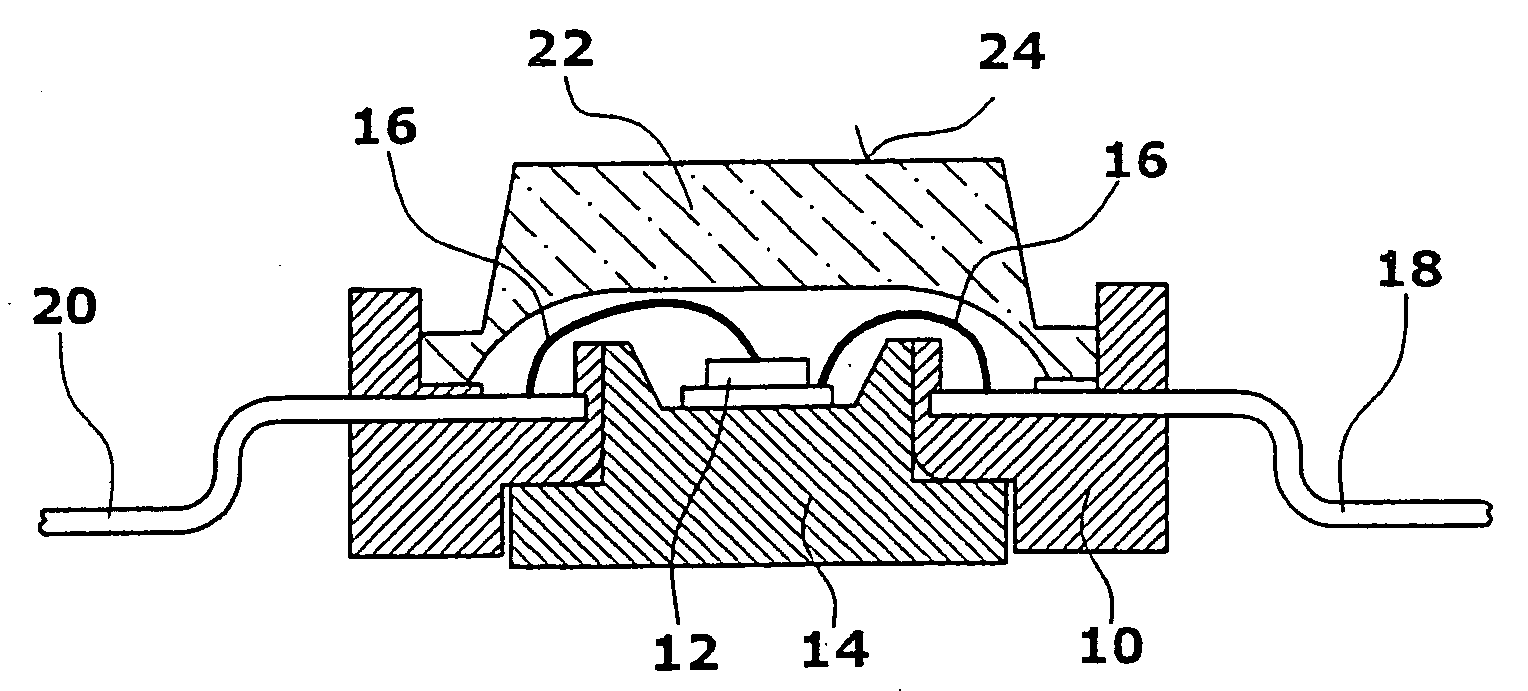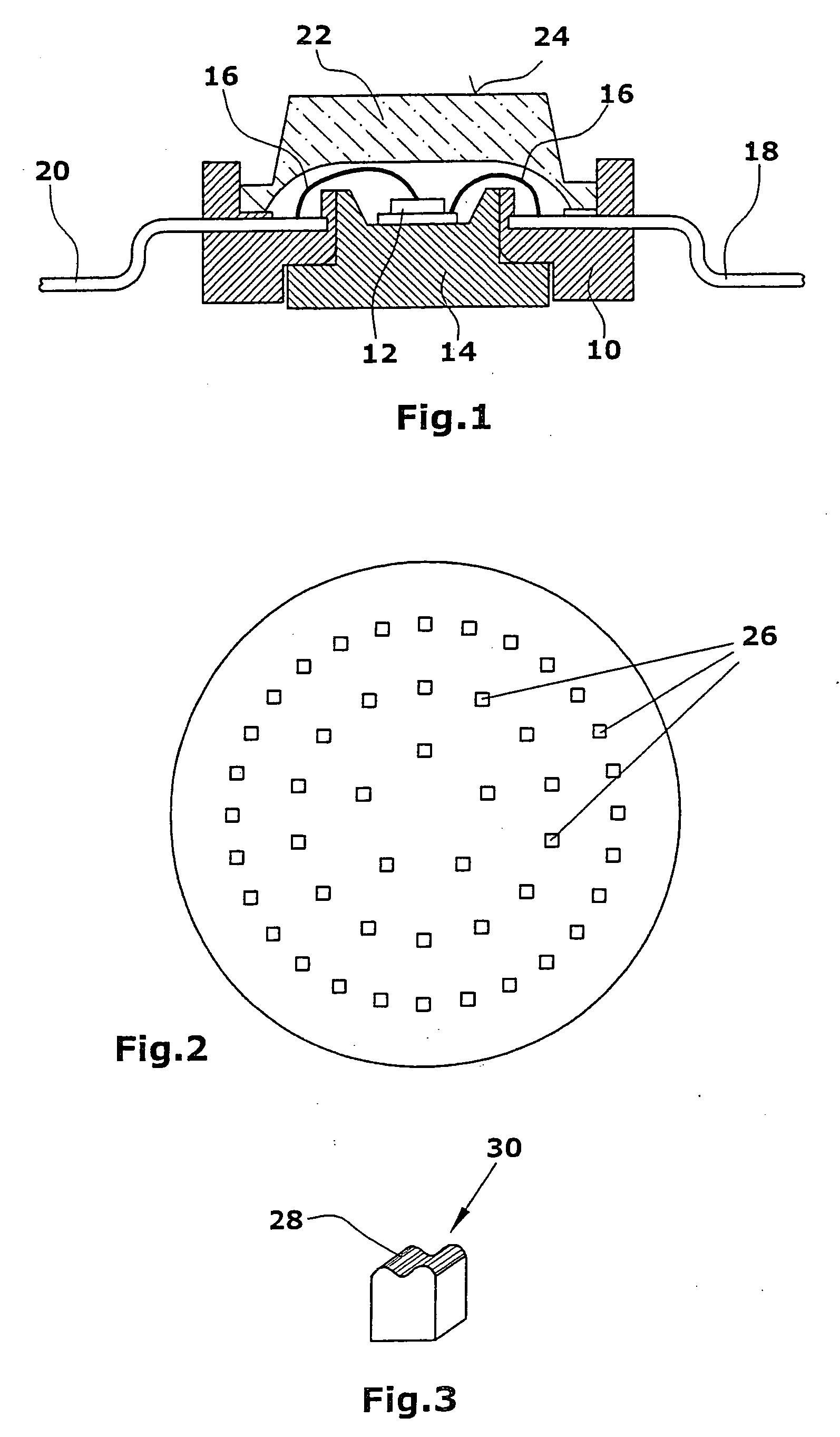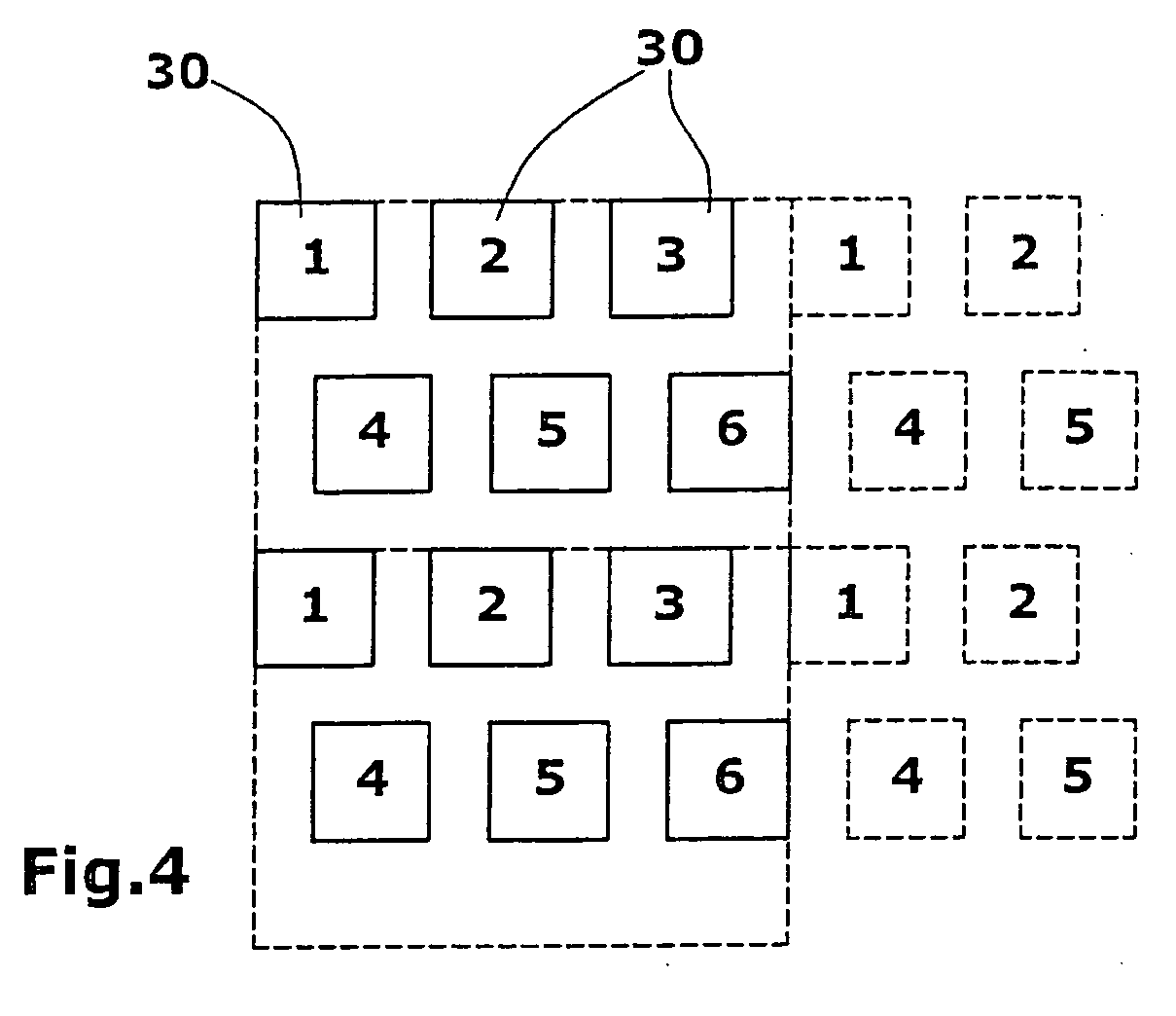LED
a technology of led and led lenses, applied in the field of led, can solve the problems of inability to correct light emission properties well, inability to achieve good beam collimation, and increased errors when individual lenses are used, and achieves the effect of simple manner, low loss, and good correction of light emission properties
- Summary
- Abstract
- Description
- Claims
- Application Information
AI Technical Summary
Benefits of technology
Problems solved by technology
Method used
Image
Examples
Embodiment Construction
[0031] An LED comprises a base body 10 that carries a light generating element 12, such as a LED chip. Possibly, the base body additionally comprises a heat conductor body 14 for cooling the light generating element 12. Lines 16 connect the light generating element 12 with a cathode 18 and an anode 20 in the emitting direction, i.e. upward in FIG. 1, a light guide body 22 is provided. The light guide body 22 is fastened to the base body 10. Groups of diffractive light guide elements 26 (FIG. 2) are arranged on a top surface 24 of the light guide body 22.
[0032] The groups of diffractive light guide elements 26 provided according to the invention, which may be arranged in concentric circles on the surface 24, serve to determine the emission angle of a LED. Using correspondingly configured and arranged light guide elements, small emission angles can be realized.
[0033] The individual groups of light guide elements 26 comprise a plurality of light guide elements 30. In an embodiment il...
PUM
 Login to View More
Login to View More Abstract
Description
Claims
Application Information
 Login to View More
Login to View More - R&D
- Intellectual Property
- Life Sciences
- Materials
- Tech Scout
- Unparalleled Data Quality
- Higher Quality Content
- 60% Fewer Hallucinations
Browse by: Latest US Patents, China's latest patents, Technical Efficacy Thesaurus, Application Domain, Technology Topic, Popular Technical Reports.
© 2025 PatSnap. All rights reserved.Legal|Privacy policy|Modern Slavery Act Transparency Statement|Sitemap|About US| Contact US: help@patsnap.com



